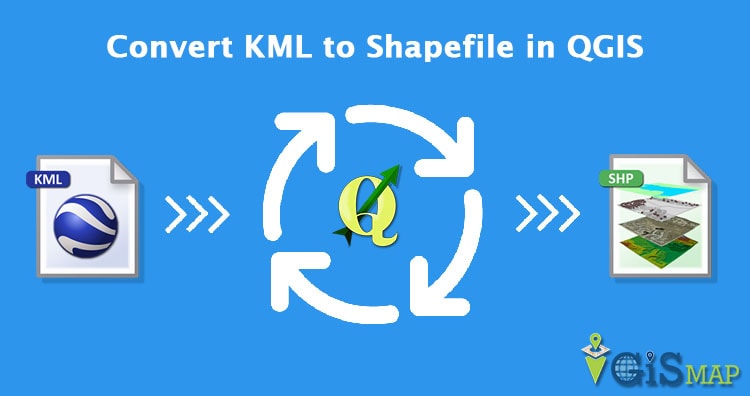

You can do that by opening up the Project tool again, selecting an input dataset and the output coordinate system, and taking note of the recommended geographic transformations that appear in the dropdown menu. all datasets going from GCS_North_American_1983 to NAD_1983_UTM_Zone_17N will need to be done as one batch, all datasets going from GCS_WGS_1984 to NAD_1983_UTM_Zone_17N as another batch…īefore beginning the Batch Project process, you will need to note the appropriate geographic transformation to use for each set of datum shifts. However, you will need to run the function multiple times, once for each group of input datasets that share a particular datum.Į.g.
Convert an arcgis file to qgis software#
Ensure that the file type specified in the Output Type dropdown menu is compatible with the software installed on the machine you are working on (just in case an older version of AutoCAD is installed) if you want to check that your export worked correctly before taking your files with you.įor advanced users: Are you looking to project a number of datasets at once? You can use the Batch Project function (located within ArcToolbox > Data Management Tools > Projections and Transformations > Feature > Batch Project) to project several datasets at once.

dwg file by selecting them via the dropdown menu or by dragging them into the box below from the Table of Contents. In the Input Features list, you can add datasets to be included as individual layers in the exported. Right-click on the name of one of them in the Table of Contents and go to Data > Export to CAD… Add all of the newly projected datasets to the map. When all of your datasets are projected into the same coordinate system, start a new map document by going to File > New. ( Tip: if another one of your layers already has the correct projection selected, you can use the Import tool to find the right projection faster.) If the transformation involves a change in datum, you will be prompted to select a geographic transformation in the following box – a list of applicable transformations will be found in the Geographic Transformation dropdown menu. by adding “_projected” to the end of each filename.Ĭlick the box next to the Output Coordinate System box to select the projection that you would like to assign to the dataset. It is a good idea to indicate that these are the projected versions of other datasets, e.g. In the Output Dataset or Feature Class box, browse to the location where you would like to save the projected dataset and specify the filename.

(If it has not yet been loaded into the map document, click on the folder icon to browse to the appropriate folder and select it.) The software should auto-detect the coordinate system of this dataset and list it in the Input Coordinate System box. In the Input Dataset or Feature Class box, use the dropdown menu to select the dataset you are looking to project. If any of your layers need to be projected, open the ArcToolbox window by clicking on the red toolbox.Įxpand Data Management Tools, then Projections and Transformations, then Feature, then double-click on Project.


 0 kommentar(er)
0 kommentar(er)
